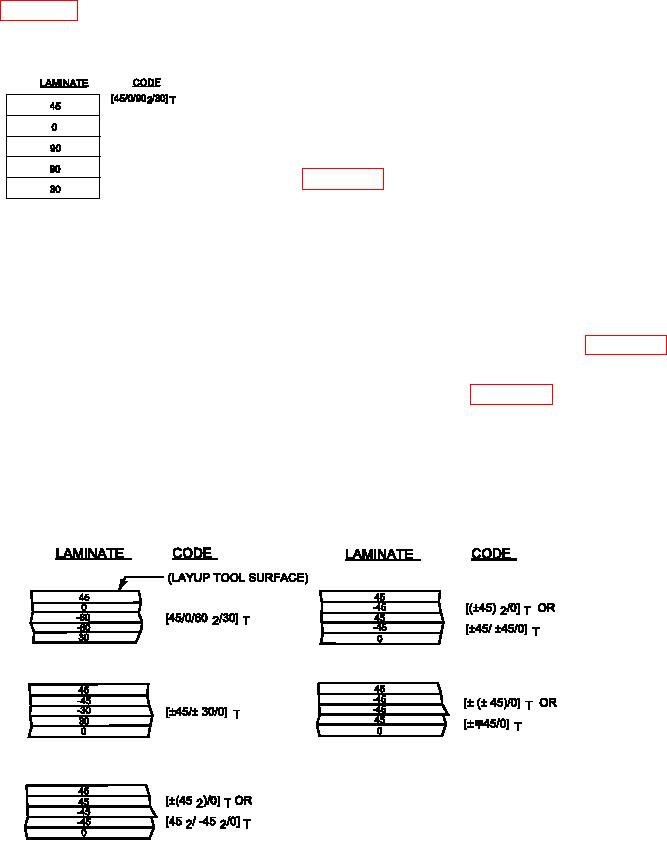
TM 1-1500-204-23-11
(1) Individual adjacent plies are separated in
(2) The Clockwise (CW) warp clock can be used
any time the part is illustrated as viewed from
the code by a forward slash (/), if their angles are
the OML, and can be thought of as looking at
different.
the same warp clock from the opposite side,
or from the outside looking inward as seen
(2) The plies are listed in sequence from one
in igure 5-15. Note that in both cases the 0
ply face to the other, starting with the irst ply laid
axis and the 90 axis remain the same, but
up, with brackets indicating the beginning and the
the 45 axes change sign.
end of the code.
(3) Adjacent plies of the same angle are
denoted by a numerical subscript.
(4) A subscript T to the bracket indicates the
total laminate is shown. If no subscript is present
on the brackets, the T is assumed to be there. See
(5) Positive and Negative Angles.
When
adjacent plies are of the same angle but opposite
Figure 5-16. Example Standard Code Element and
in sign, the appropriate use of the + and - signs is
Laminate
employed. Each + or - sign represents one ply and
supersedes the use of the numerical subscript, which
5-8. STANDARD LAMINATE/ORIENTATION CODE-
is used only when the directions are identical. Signs
. The Standard Laminate Code was originally formu-
can be condensed to (plus minus) or a (minus
lated speciically for unidirectional laminates; a modii-
plus) sign with the sign that is on top representing
cation was subsequently established for woven fabric
the irst ply in the layup order. See igure 5-17.
and braided laminates. The standard code is used
In the ifth example illustrated, the latter code is
to describe a speciic laminate uniquely and is most
preferred because it can more easily accommodate
simply deined by the following detailed description
larger numbers. See igure 5-18. Note that, in
of its features.
condensing the signs, the sign of the center ply of
an odd number is left uncombined.
a. Standard Code Elements. Each ply is denoted
by a number representing its orientation in degrees
between its warp direction and the reference direction.
Normally the angles are limited to between 90 and
90.
Figure 5-17. Example for Positive and Negative Angles

